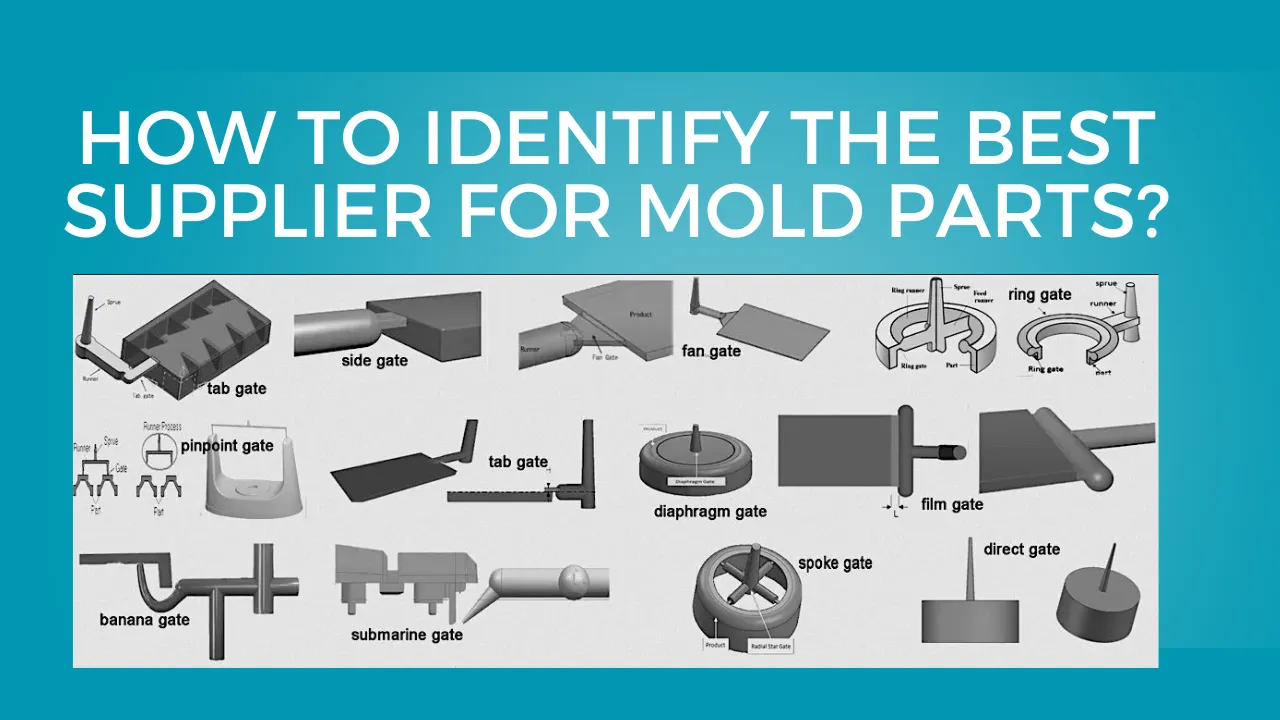Selecting the right supplier for mold parts is a critical decision for any manufacturer or OEM. The quality, consistency, and reliability of these components directly impact your production efficiency, product performance, and ultimately, customer satisfaction. With so many injection mold parts factories and plastic mold parts manufacturers available worldwide, identifying the best supplier can seem overwhelming. However, by understanding key factors and asking the right questions, you can make a choice that ensures smooth operations and long-term success.
From my experience working with multiple factories across different industries, the process involves evaluating technical capabilities, quality standards, communication practices, and more. The goal is to find a supplier who is not only capable of producing high-quality parts but also a true partner in innovation and problem-solving.
Assessing Technical Expertise
The first step in identifying the best supplier is evaluating their technical expertise. A reliable plastic mold parts manufacturer should have experience working with the specific types of plastics and products you need. This includes knowledge of material properties, mold design, and production processes.
For instance, if your product requires precise, high-tolerance components, your supplier should demonstrate expertise in creating molds with minimal deviation. They should also be familiar with advanced production technologies like multi-cavity molds, gas-assisted injection molding, and CNC-machined mold inserts. An injection mold parts factory with skilled engineers and technicians is more likely to produce parts that meet your specifications consistently.
Checking Quality Assurance Practices
Quality control is a non-negotiable factor when selecting a mold parts supplier. The best plastic mold parts manufacturers implement rigorous inspection procedures at every stage of production—from incoming material verification to in-process checks and final part inspection.
ISO certifications, such as ISO 9001 for quality management or IATF 16949 for automotive production, indicate a commitment to standardized quality practices. Additionally, a supplier that provides detailed quality reports, testing data, and traceability for each batch of parts demonstrates transparency and reliability, which is crucial for OEM production.
Evaluating Production Capacity and Scalability
Another essential consideration is whether the supplier can handle your required production volumes. Some injection mold parts factories are optimized for small prototype runs, while others specialize in high-volume production. Understanding their capacity ensures that your supplier can meet deadlines without compromising quality.
Scalability is also important. Your production needs may grow over time, and a supplier who can scale efficiently helps avoid disruptions. Look for a plastic mold parts manufacturer that manages materials, machinery, and logistics effectively to accommodate changing order sizes.
Reviewing Track Record and References
Experience matters when selecting a supplier. Ask for case studies, references, or client testimonials that demonstrate the supplier’s track record in delivering similar parts. A well-established injection mold parts factory will have a portfolio of successful projects and satisfied OEM clients.
During my own projects, I’ve noticed that suppliers with strong client relationships often anticipate challenges, communicate proactively, and provide practical solutions—qualities that are invaluable for maintaining consistent production.
Assessing Communication and Support
Effective communication is often overlooked but is crucial for identifying the best supplier. A reliable plastic mold parts manufacturer should be responsive, transparent, and willing to provide technical guidance throughout the project.
For example, when designing a complex part, your supplier should advise on material selection, wall thickness, draft angles, and mold flow optimization. A factory that actively collaborates rather than simply taking orders will help prevent costly mistakes and ensure that production runs smoothly.
Considering Cost and Value
While cost is an important factor, it should not be the sole criterion. Extremely low prices may compromise quality, delivery reliability, or after-sales support. Instead, focus on the overall value a supplier offers, including technical expertise, quality assurance, and production efficiency.
The best injection mold parts factories strike a balance between competitive pricing and superior service. By investing slightly more upfront, you can often save significant costs downstream by avoiding defects, delays, or rework.
Visiting the Facility (If Possible)
Whenever feasible, visiting the supplier’s facility provides firsthand insight into their operations, equipment, and processes. Observing their plastic mold parts manufacturing workflow, machinery maintenance, and quality control procedures can reveal much about their capabilities and professionalism.
Even if a physical visit is not possible, virtual tours or video calls can provide a reasonable overview. Ask detailed questions about mold design, production timelines, and material handling to gauge their expertise and reliability.
Conclusion
Identifying the best supplier for mold parts involves careful evaluation of technical skills, quality control, production capacity, communication, and overall value. A trustworthy plastic mold parts manufacturer not only produces high-quality parts but also collaborates as a partner, offering guidance, innovation, and support throughout the project.
Choosing the right injection mold parts factory ensures that your OEM production remains consistent, efficient, and cost-effective. By following these steps, you can confidently select a supplier who meets your needs today and adapts to your growth tomorrow.





